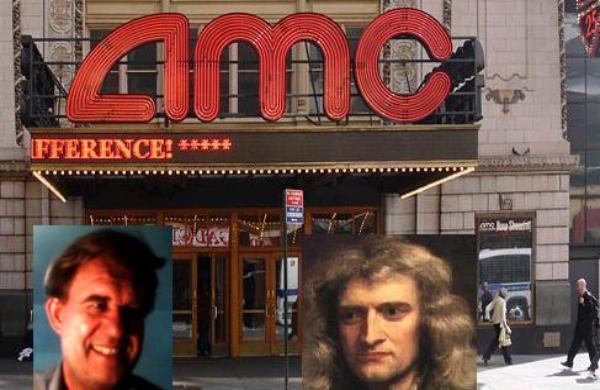| Adapted for the Internet from: Why God Doesn't Exist |
| Why is a conclusion necessary? |
1.0 Conclusions are opinions
The last phase of a scientific presentation is known as the conclusions or belief. Once the prosecutor has explained objectively
how or why something happened, he must synthesize what he inferred from his experience. The jury needs to reach a verdict.
This stage is necessary because others may agree with his theory yet infer something different. If a hypothesis is an assumption
and a theory is an explanation, a conclusion is an opinion. Here’s an example of each:
- Hypothesis (assumptions)
- Exhibits: Earth, Sun, space
Definitions: object, motion, space, mass, planet
Statement of the facts: The Earth goes around the Sun.
Theory (explanation):
- The Sun’s mass warps the space in its vicinity. Our planet orbits the Sun like a tiny ball orbits the roulette.
Conclusions (opinions):
- 1st opinion: The Earth touches space and we should be able to run an experiment to verify warped space.
2nd opinion: Warped space is a mathematical abstraction and is beyond experimentation.
- It is not really theories that generate heated debates. It is the beliefs and conclusions reached by the jurors. Assuming the
debaters understand the explanation exactly as given, they are likely to arrive at different interpretations about what it entails
because of their particular predispositions. The prosecutor may have successfully explained and even managed to convince
the jury that the accused committed the crime, but the jury may decide that the incident qualifies as manslaughter rather than
murder, and suggest a prison term rather than the gallows. For example, when Planck proposed the theory that energy comes
in discrete packages, he also suggested that, more than a faithful depiction of reality, it was a convenient yet artificial statistical
abstraction. [1] [2] It was his followers who later converted the packets into real particles, from theory to hypothesis, and from
an explanation into objects.
2.0 Whether a table is an object is not a matter of opinion
What the prosecutor cannot do in science is theorize or conclude that a table is an object. A table is an object by definition of
the word object, and these matters are settled at the assumptions stage. Likewise, it doesn’t make sense for the prosecutor to
conclude that a table exists. A table exists or doesn’t by definition of the word exist and not because the prosecutor proves or
believes it. In Science it is ludicrous to attempt to predict that a carpenter will work the wood into a table, yet mathematical
physicists predict the formation of ‘objects’ known as black holes from stars all the time. It is not the purpose of the scientific
method to prove that such and such is an object or that it exists or that it will form. We don’t infer objects from equations or
experiments during a scientific presentation. We present objects and describe their behavior with equations.
3.0 Mistaking conclusions for theories
The typical problem with many contemporary theories, specifically those dealing with extinction, is that they are not really
theories. They are one-liner summaries, conclusions presented in the guise of theory. Imagine arriving at the theatre just in time
to catch the ending. You see the hero die in the arms of his lover while she weeps crocodile tears. So? What do you know about
the plot? You know the ending, but you have to fill in the blanks on your own.
This is more or less what happens in Anthropology and Paleontology today. The 'theorist' tells you that Neanderthal became
extinct because humans annihilated them or crowded them out or contaminated them or intermarried with them. Great! Now
how did it happen? You'll never find out from the experts. The anthropologists and paleontologists instantly present evidence
for their conclusions. Their entire dissertation is their particular interpretation of a given bone. The paper is about the 'theorist's'
interpretation of the evidence and not about how the species withered away. A genuine theory is supposed to tell you step by
step how the Neanderthals became extinct. For example, the speaker can present it chronologically, showing what happened
40,000 years ago then 37,000 then 30,000. This is not what you will hear. You will hear a conclusion followed by an analysis of the
bones. Neanderthal had smaller cavities or bigger bones, so he didn't develop speech or abstract thought, and this gave him an
evolutionary handicap. What's this type of train of thought got to do with extinction? A genuine extinction theory is a movie of at
least the general steps that led to the Neanderthals' demise. You should be able to understand step by step how the mechanism
or agent worked to destroy this species.
The mathematical physicists also make this error when they claim that the Universe sprang from absolutely nothing or when
they theorize that particles appear from the void. The mathematicians never explain the process, specifically how nothing
suddenly acquires length, width, and height. They jump directly from the hypothesis to the conclusion, bypassing the theory
altogether. They point to nothing or to energy and instantly conclude with their physical interpretation: Big Bang suddenly
exists or two particles with different charges exist.
4.0 Conclusions
So what does the scientific method I just described have to do with General Relativity?
GR is a religion because it does not subscribe to this process. Specifically, it has invalid hypotheses. The objects that relativists
present at the Exhibits Phase of the Hypothesis are concepts, the definitions are proofs, and the statements of the facts are
opinionated theories that the proponent attempts to pass off as facts. More to the point, GR is a religion because it only offers
supernatural and irrational objects and physical interpretations. Its adherents first convert abstract concepts into solid objects
and then magically move them around. This surrealism may be acceptable in Mathematics, but is totally unacceptable in Physics.
I support these arguments here and show that the mathematicians have been doing this since the days of Euclid.



| That was a great movie, Newt! |
| Yeah. It lasted almost a full minute! |
- Module main page: Scientists don't know what Science is
Pages in this module:
- 1. Relativists believe that Science is about predicting and falsifying
2. So what is Science, really?
3. Relativists don't understand the difference between Science and Religion
4. A relativist believes that a hypothesis is a prediction
5. A relativist thinks that a theory becomes a fact
6. This page: Why are conclusions necessary?
7. The five unscientific words of Mathematical Physics: energy, mass, force, field, and time
8. Mathematical Physics only offers Ptolemaic explanations
9. Relativists confuse Technology with Science
10. Relativists give Nobel Prizes to each other
- ________________________________________________________________________________________
- Copyright © by Nila Gaede 2008
